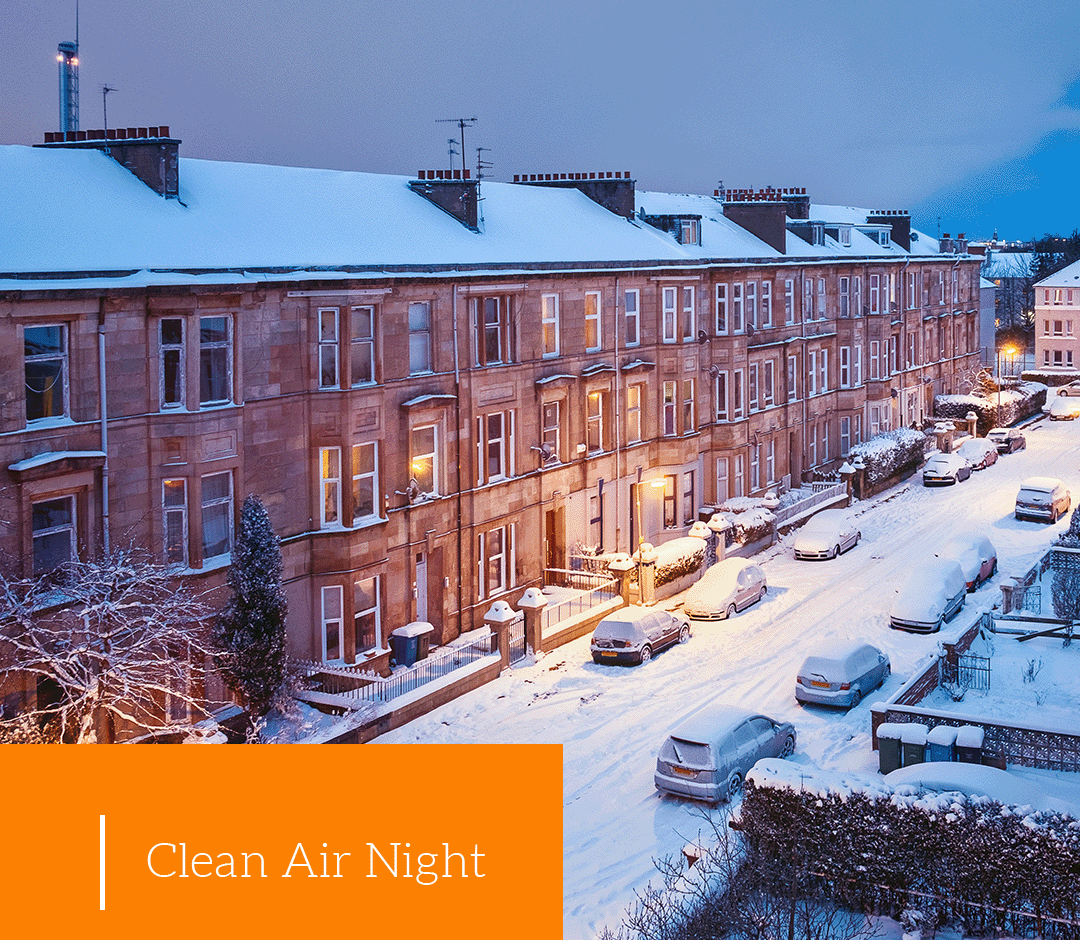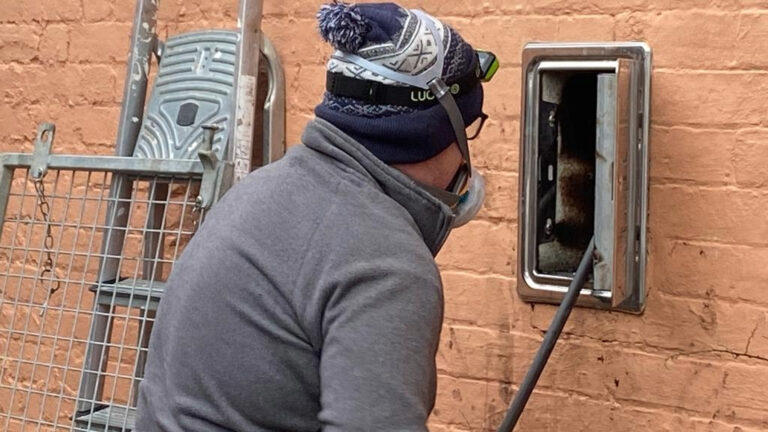
Clean Air Night fact sheet
Following recent media reports and campaigns, HETAS wants to provide clarity regarding some burning questions. With so many mixed messages and apparently conflicting statistics, it is important to focus on the things we can do to minimise the effect of burning on our environment.
The fact is that the Government has not said it intends to ban domestic burning. Research and consultation have revealed that the consequences of attempting to ban burning at this time are not acceptable to many vulnerable groups; as well as being almost impossible to enforce at this time in the development of clean heat and sustainable use of heat generating fuels and technologies. It is important that we stay focused on minimising emissions, continuing research, and educating stove users to burn as cleanly as possible across the UK.
A key takeaway to consider when reading headlines is that government-published reports show annual PM2.5 emissions have continued to decrease – despite recent increases in popularity of stoves across the UK. Our industry works hard to innovate, and organisations like HETAS work with our registered installers, approved sweeps, servicing companies, and retailers to educate users across the UK. Similarly, Woodsure continues to promote the use of better, cleaner, higher quality fuels to reduce emissions.
HETAS and Woodsure, alongside many manufacturers, retailers, and other trade professionals continue to push for the use of the cleaner burning stoves, better fuels, regular and professional appliance maintenance, chimney sweeping, and the best-practice use of appliances in the home. Maintaining these efforts will help to ensure emissions continue to reduce. Innovation and education are integral to ensuring emissions can be minimised and the best, most efficient practices must continue to be encouraged.

Promote responsible burning on social using our simple images for Clean Air Night. Share alongside this fact sheet.
Why is there such mixed messaging around wood burning?
There shouldn’t be –
- Government is not banning wood burning.1
- Government have ensured that only appliances that meet emissions limits can be sold in the UK – with industry schemes going beyond this.2-3
- Only lower moisture wood fuel, and low smoke, low sulphur mineral fuel can be sold across England, requiring sellers to comply and only supply fuel that is scientifically proven to produce less pollution.4-8
As there is no intention to ban domestic burning, we must all encourage the best practices to ensure wood stoves across the country are used optimally and safely.
Calling for a total ban on any widely used heat technology divides opinion and fails to consider those who rely heavily on that heat source or technology – as was the case with the recent reversal in Scotland.
Isn’t burning wood an inefficient way to heat your home?
A stove’s heat is dependent on many factors, such as the:
- Quality of the fuel
- Efficiency and age of the appliance
- Airflow
- Condition of the chimney and appliance
- User operation
A modern appliance that is installed by a professional, regularly maintained, and operated effectively using high-quality fuel can be an excellent way to heat your home.
Many stoves are used as secondary heating appliances especially in late autumn and early spring when using a stove can alleviate the need to turn on whole heating systems fuelled by fossil fuels – therefore displacing another undesirable heating source with one that forms part of a more sustainable fuel chain. In winter, stoves are used to supplement poor and often inefficient heating systems and in many rural areas may be the only source of heat in smaller dwellings.
Modern wood-burning stoves can achieve efficiencies of over 80% and are up to 90% more efficient than a traditional open fire, reminding us of the importance of not conflating all solid fuel burning methods and technologies.
Every home is different and not every heating solution may be suitable. Burning solid fuels gives flexibility to households that other forms of heating may not offer; the idea that all wood burners are inefficient is outdated and incorrect.
What about the comparisons between wood burners and HGVs?
This comparison is not straightforward and is sometimes not representative. There are two comparisons that have made headlines in the past: one comparing emission limits and another comparing average hourly emission rates.
Firstly, the comparison of HGVs to emission limits of domestic combustion appliances uses data from Denmark, rather than the UK’s official data. The UK’s official data is published by Defra in the Emission Factors for Small Combustion Appliances (released November 2021) and has significantly lower figures than the data used in the comparison.
Official government figures state that the annual PM2.5 emissions factor for ‘advanced/ecolabelled stoves’ is 93 g/GJ.
This is over 4 times lower than the figures used in the HGV comparison.
All Cleaner Choice appliances meet the definition of an ‘advanced/ecolabelled stove’ used to estimate this emission factor, with many Cleaner Choice appliances going above and beyond to achieve high efficiencies and lower emissions. Old, inefficient appliances and open fireplaces burning wet wood produce significantly higher amounts of particulate matter – over eight times more PM2.5 emissions annually.
In comparing average hourly emission rates of a wood-burning stove to a HGV’s exhaust emissions, the second example often ignores official government data, which states:
Most PM emissions from road transport derive from non-exhaust emissions
Brake, tyre, and road wear from HGVs are commonly omitted in this comparison, despite the official government statistics showing that non-exhaust PM2.5 emissions have increased by 15% over the last decade, generating over 20,000 tonnes of particulate matter. When considering reports and statistical comparisons, it is key to understand what the comparisons take into account.
Further, stoves are used seasonally – in contrast to HGVs which are on our roads all year round – and stoves are required, by government regulations and standards, to emit fumes above the property or at high level, whereas lorries emit a wide range of pollutants from diesel at a low level.
It is important that we all contribute to the reduction of particulate matter and other pollutants; discovering detailed information about where exactly these pollutants come from will help us to tackle the most urgent first – misrepresentative and sometimes confusing comparisons can impede this effort.
Doesn’t burning solid fuel and wood cause a lot of the pollution in our air?
To answer this question, we must first understand that there are different solid fuels. These split into two main groups, although there are also more modern and innovative fuels which span both types.
Solid Mineral Fuels
House coal is the sort of soft coal that was utilised over many years in open fires. So-called ‘smokeless fuels’ are either natural anthracites or manufactured mineral fuels that produce significantly less smoke and sulphur, and have replaced house coal for domestic burning.
The Government in England has banned the sale of house coal since 1 May 2023, allowing only authorised smokeless fuels to be legally purchased. It seems likely that Wales and Scotland may follow with similar legislation, which will further contribute to eliminating the most polluting fuels. The removal of house coals and any other similar fossil fuels with high smoke emissions is a very positive move for clean air, and another step towards minimising our annual emissions.
More action may be taken in due course to assess the viability of coal-derived heating fuels in the UK. HETAS will support government with creating just, reasoned legislation that supports the solid fuel heating industry and appliance users across the UK.
Wood burning
It is important to remember that the combustion of dried wood causes significantly less emissions than the combustion of wet wood. Fuel with a higher moisture content (above 20%) will struggle to burn and burn poorly, producing much less heat and significantly higher emissions than dry wood.
High-quality fuel used in an efficient, regularly maintained stove produces significantly less emissions when it burns.
The harmful effects of fine particulate matter are well-known across the industry and action continues to be taken by stakeholders. HETAS works with all UK governments and devolved administrations, utilising our expertise to provide advice and guidance on the best practices, and will continue to work diligently towards a cleaner, safer, and more sustainable environment.
Doesn’t burning wood create a large portion of the UK’s PM2.5 pollution?
According to official government data, the amount of PM2.5 emissions have showed signs of a steady decrease – despite the increasing popularity of wood-burning stoves in recent years, with estimated PM2.5 emissions from domestic combustion decreasing by 15% since 2018.
The National Atmospheric Emissions Inventory (NAEI) and supporting documents give us insight into how these PM2.5 emissions appear to be primarily from poor burning habits, where users are burning unseasoned wood on old, inefficient appliances. The NAEI shows that high-quality fuel burnt on a modern stove only accounts for less than 0.3% of the UK’s total PM2.5, revealing valuable insights into how the worst behaviours account for the majority of domestic combustion emissions.
Comparing the best practice recorded under this methodology to the worst practice, the efficiency of a modern wood burner is evident. Using the blanket term of ‘domestic combustion’ diminishes the progress that has been made across industry and puts unnecessary blame on households burning efficiently.
Industry has responded to the Government’s annual reports, continuously innovating their appliances to increase efficiency and reduce emissions further. Certification schemes, such as the HETAS Cleaner Choice scheme, exist to independently verify that PM2.5 emissions are kept to a minimum, promoting the best appliances to consumers and pushing manufacturers to keep innovating.
Why are the PM2.5 percentages different depending on who you ask?
Statistics can be misinterpreted. Assigning emissions to specific sectors and activities is not easily done, and the methodologies to measure domestic combustion emissions vary.
It is often the case that different types of home-burning are grouped into the wide-reaching term of ‘domestic combustion’.
The NAEI’s annual figures, stemming from government departments and key data providers, show the stark difference between responsible and irresponsible wood burning:
- Modern Ecodesign stoves burning dry wood produce 0.174 kt/y of PM2.5.
- Open fireplaces burning wet wood produce 1.441 kt/y of PM2.5.
This is over eight times more emissions annually.
Modern Ecodesign stoves burning dry wood produce less than 0.3% of the UK’s annual PM2.5 emissions. Despite this, many groups misinterpret annual emissions statistics and assume that the 29% figure is representative of all households that heat their homes with a wood burner.
Looking at apportioning the source of emissions more accurately allows us to concentrate on the worst emitters and further discover ways to minimise the UK’s PM2.5 emissions. ‘Home burning’ encompasses many different types of burning, such as:
- Open fires (possibly the worst polluters for indoor burning)
- Old stoves with low levels of control (may be multifuel)
- Older stoves with moderate levels of control (may be multifuel)
- More modern stoves complying with current regulations
- Innovative new stoves that burn controlled fuels in more technologically advanced ways (the least polluting appliances)
- Central heating boilers – often highly efficient and low emissions
- Outdoor burning – BBQs, firepits, chimineas, bonfires, pizza ovens, etc. (often very smoky and high emitters of PM 2.5)
Is burning wood carbon neutral?
Whilst burning wood isn’t carbon neutral, it can be considered carbon lean. However, the sustainability and carbon neutrality of wood fuel is complex and depends on a number of factors – namely the timeframe, its use, and how a woodland is managed.
The fossil fuels used in planting, managing, harvesting, processing, and transporting timber/wood fuel are very minimal in comparison to the carbon dioxide extracted from the air while the trees are growing. This carbon dioxide is then rereleased into the atmosphere when the wood fuel is burnt, but the factors influencing the sustainability of wood fuel are complex and need to be considered. It is also important to note that many Woodsure suppliers also source and supply in close proximity, reducing the road miles and energy needed to transport the fuel, minimising the carbon they produce.
The key thing to consider when examining the carbon neutrality of wood fuel is the management of the woodland where it is sourced from. A well-managed woodland is a resilient woodland capable of maximising its carbon absorption and storage capabilities, contributing positively to mitigating climate change. In contrast to deforestation, a managed woodland is sustained to increase total carbon absorption and create a woodland that can both grow faster and stronger. This is achieved through a variety of methods, such as:
- Effective species selection: Sitka spruce grows faster than oak, making it an ideal candidate for a managed woodland that can be routinely replanted.
- Thinning and pruning: by reducing competition for light and nutrients in the woodland, growth is promoted across all the remaining trees, subsequently increasing carbon absorption.
- Managing pests and diseases: in preventing the spread of pests and diseases, healthy growth of the trees can continue and the woodland’s biodiversity can thrive.
Not all timber extracted from managed woodlands is used for burning, too. Wood is used in the construction of our houses and to make furniture; by using the byproducts of this wood as wood fuel, it ensures all the wood extracted is put to use and none is wasted.
Comparing wood fuel to fossil fuels, the time required for the emitted carbon dioxide to reabsorbed is very different. Trees replanting in a managed woodland take decades to reabsorb the carbon dioxide; fossil fuels take thousands of years.
The nuance of whether burning wood can be part of a carbon-neutral strategy is underpinned by both the sustainable management of our woodlands and the way that the wood fuel is being burned.
Irresponsible burning produces more emissions, negatively affecting the reduction in emissions that sustainable sourcing offers. It is important that every stage of wood fuel’s life cycle is carefully informed – from fell to use – to keep it as carbon lean as it can be.
Why don’t wood burner owners heat their homes in other ways?
Approximately 4.4 million households across Great Britain were estimated to be off-grid in 2021 – representing 15.1% of total households.
Many off-grid households rely on their wood burners to heat their homes and do not have the means to use another form of heating, either due to funds, reliability, or fuel poverty.
This is not to say that wood burners do not exist in properties on the gas grid. Wood burners are also a viable supplementary heating solution for properties with modern heating technologies, such as a heat pump, allowing for homes (particularly poorly insulated homes) to be sufficiently heated during winter months.
Every household is different and benefits from different heating solutions. The Scottish Government’s recent U-turn demonstrates how many households across the UK rely on their wood burner to stay out of fuel poverty and blanket legislation negatively impacts individuals that are not the root of the problem.
Why are there so many people burning wood in urban areas, such as London?
Modern wood-burning stoves are a highly efficient heating solution suitable for households in both rural and urban areas.
On average, 40% of appliances across the UK are open fires. However, 68% of appliances in London are open fires – the highest in the UK. Assessing this official government data reveals that steps can be taken to address London’s consistently higher exposure rate, as revealed by IFS. Upgrading London’s open fires to modern, highly efficient stoves will help the city’s air quality improve and its exposure rates get closer to the rest of the UK, which have fell by 54% since 2003.
Further, many urban areas, like much of London, are smoke control areas. These areas prohibit the burning of wood in non-exempt appliances, such as open fires, in an effort to reduce emissions, drive consumers towards modern appliances, and encourage best practices. Only the most efficient burning appliances and highest quality fuels should be burnt in smoke control areas to ensure emissions are minimised.
Why hasn’t the Government done anything to tackle this?
Government and industry have been working together for a long time to reduce emissions and limit the worst burning practices. Legislation exists to combat the poorest, least efficient, most polluting ways of heating your home with a solid fuel appliance:
- Ready to Burn certification ensures that consumers purchasing firewood to burn at home are only able to purchase dry firewood, enabling a cleaner and more efficient burn.4-8
- Ban on traditional house coal in England for use in homes made it illegal to sell coal, preventing the use of a highly polluting fuel from 1 May 2023.9
- Competent person schemes ensure solid fuel installations are professionally installed by a trained expert, preventing poor installations and setting industry safety standards that are constantly evolving.10
- Regulations and standards will continue to strengthen and evolve over time for all solid fuel appliances and installations – furthering innovation in appliance manufacturing and reducing emissions.
- Smoke control areas (SCAs) limit which fuels and appliances can be installed and used by homeowners, and provide local authorities with the legislative powers to fine those burning irresponsibly – with recent funding from Defra enabling cities to consult on expanding their SCAs, widening enforcement powers.11
- Legal emission reduction targets require government to meet ambitious targets, incentivising effective, decisive action that will continue aiding emissions reductions from all sources – including domestic combustion.12
When combined with expert-led user education, this legislation prevents the worst, most polluting burning practices. Every aspect of a stove – from manufacturing and installation to fuelling and maintenance – is held under scrutiny to ensure regulations, legislation, and best practices are followed.
The entire solid fuel industry has responded to this scrutiny, taking accountability and tirelessly working to innovate – reducing emissions, improving efficiency, and educating consumers on how they can do their part, too.
Why is nothing done about complaints made towards peoples’ wood burners?
Recent data regarding nuisance burning has made headlines lately, but digging deeper reveals that some of the complaints are not actually about wood burners. For example, in Birmingham, less than 4% of complaints to councils related to house chimneys.
The remaining 96% of complaints were regarding unregulated outdoor burning, such as residential bonfires, barbecues, or chimineas. Only 25 of the 783 complaints received by Birmingham council in 2024 were related to wood burners, highlighting the importance of examining this data to understand where these complaint numbers stem from. The numbers are similar in Brighton and Hove and Bristol – only 12 and 14 of the total complaints, respectively, received were due to excessive smoke from chimneys.
It is vital that we consider the use of the blanket term ‘domestic burning’. This term puts unnecessary blame on households burning efficiently and adhering to smoke control area rules, as is the case with some complaint data.
HETAS and Woodsure advise anyone impacted by nuisance burning to report the offence to their local council. Local authorities have been given guidance by Defra on how to handle complaints and prevent individuals from breaking smoke emission rules, and have the legislative powers to issue financial penalties to the person responsible for breaking smoke control area rules.
Education for both stove users and local authorities is essential to prevent irresponsible burning. HETAS and Woodsure work alongside local authorities to increase engagement and provide expert training, share regular consumer education pieces to promote the best burning practices, and Defra have run workshops with over 150 local councils regarding smoke control areas and how complaints should be handled.
We have a Primary Authority partnership with Trading Standards, enabling us to provide expert advice on any solid fuel-related concerns that consumers may report to their local council. This relationship ensures we can provide councils with the assured, expert advice needed to enable compliant solid fuel installations across the UK.
Why aren’t smoke control areas stopping people from burning?
Smoke control areas (SCAs) exist to prohibit the most polluting domestic burning and grant local authorities the legislative powers to fine individuals that are burning poorly. This encourages the best, least polluting burning practices and promotes the use of modern, efficient appliances as opposed to open fires or old, inefficient stoves.
Find out more about smoke control areas in our article in light of expansions.
As an industry-leading certification body, HETAS is uniquely positioned to provide expert guidance to government departments, professionals, and consumers. It is easy for complex datasets to be misunderstood or misinterpreted, and it is vital that we stay vigilant to investigate beyond headlines.
Sources
- Department for Environment, Food & Rural Affairs (2023) Environmental Improvement Plan 2023. Available at: https://www.gov.uk/government/publications/environmental-improvement-plan
- Department for Energy Security and Net Zero & Office for Product Safety and Standards (2021) Regulations: ecodesign of energy-consuming products. Available at: https://www.gov.uk/guidance/placing-energy-related-products-on-the-uk-market#full-publication-update-history
- HETAS, HETAS Cleaner Choice. Available at: https://www.hetas.co.uk/consumer/services/products/.
- Department for Environment, Food & Rural Affairs (2021) Selling wood for domestic use in England. Available at: https://www.gov.uk/guidance/selling-wood-for-domestic-use-in-england
- Price-Allison, A. et al. (2021) ‘The impact of fuelwood moisture content on the Emission of gaseous and particulate pollutants from a wood stove’, Combustion Science and Technology, 195(1), p. 133–152.
- Holubčík, M. and Jandačka, J. (2018) ‘The effect of moisture content of firewood on the energy efficiency of fireplace insert and emission production in the combustion process’, Acta Facultatis Xylologiae Zvolen res Publica Slovac, 60(2), p. 189–197.
- Rau, J. A. (1989) ‘Composition and size distribution of residential wood smoke particles’, Aerosol Science and Technology, 10(1), p. 181-192.
- Price-Allison, A. et al. (2019) ‘Emissions performance of high moisture wood fuels burned in a residential stove’, Fuel, 239, p. 1038–1045.
- Department for Environment, Food & Rural Affairs (2023) Selling coal for domestic use in England. Available at: https://www.gov.uk/guidance/selling-coal-for-domestic-use-in-england
- Ministry of Housing, Communities and Local Government (2013) Competent person scheme – current schemes and how schemes are authorised. Available at: https://www.gov.uk/guidance/competent-person-scheme-current-schemes-and-how-schemes-are-authorised
- HM Government, Smoke control areas: the rules. Available at: https://www.gov.uk/smoke-control-area-rules
- HM Government, The UK’s plans and progress to reach net zero by 2050. Available at: https://commonslibrary.parliament.uk/research-briefings/cbp-9888/



